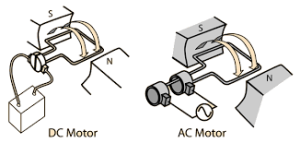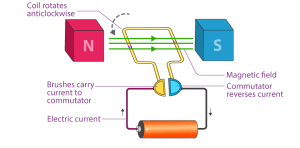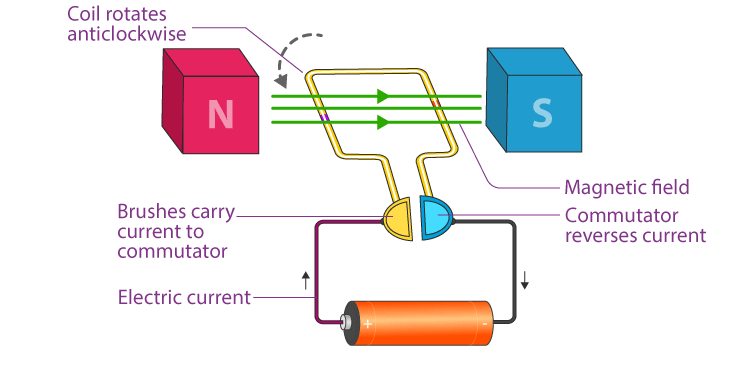I. Introduction
A. Brief overview of AC motors
AC motors are important parts of modern life, powering industrial gear, domestic appliances, and transportation networks. Their adaptability and durability are particularly advantageous to economic productivity, comfort, and long-term growth.
B. Importance of understanding their operation
Engineers and other electrical professionals must grasp how AC motors function. It improves system maintenance, diagnosis, and design, resulting in increased performance and stability. So, learning about the science of AC motors opens up a world of possibilities and uses in many fields.
II. The Basics of AC Motors
A. Definition and components
Through electromagnetic induction, an alternating current motor runs. The magnetic field that rotates is produced when alternating current passes through the stator windings. Because of the electric force generated by the rotor’s conductors and the fluctuating magnetic field, the rotor revolves.
B. Role of electromagnetic induction
An iron core wrapped around a coil makes up the stator, or stationary portion, of an AC motor. Alternating currents create a revolving magnetic field that powers the rotor by reacting with these windings.
III. Understanding AC Motor Operation
A. Principles of electromagnetic induction
An electromagnetic induction system powers an alternating current motor. When an alternating current passes through the stator windings, a rotating magnetic field is created. The rotor rotates due to the electric force produced by the interaction of its conductors with the fluctuating magnetic field.

B. Function of stator and rotor
Rotors and stators provide distinct but related functions in alternating current motor functioning. The stator produces a stable magnetic field, and the rotor revolves in response. The interplay of the stator and rotor converts electrical energy into mechanical motion.
IV. Key Components Explained
A. Stator
The AC motor’s permanent stator is made up of coils around an iron core. The rotor rotates as a result of the wiring that creates a magnetic field between these coils and alternating current.
B. Rotor
The rotor is the rotating part of an AC motor located within the stator. It typically consists of conductive bars or coils arranged around a shaft. The rotor is driven to rotate by electromagnetic forces when it is exposed to the stator’s revolving magnetic field.
C. Bearings and housing
The casing and bearings in an AC motor give the rotor and stator support and defense. Bearings reduce wear and friction by allowing the rotor shaft to move smoothly. In contrast, the housing ensures that the motor is correctly aligned and running while shielding the rotor and stator from the elements.
V. The Mechanics in Action
Understanding the physics underlying AC motors aids in the explanation of the intriguing interaction of electromagnetic forces. A revolving magnetic field is created by the stator windings being energized by an alternating current. Electromotive forces are then produced that propel the rotor forward when this field interacts with the rotor’s conductors. The constant interplay between magnetic fields and conductors enables AC motors to efficiently convert electrical energy into mechanical motion, providing accurate and dependable power for a wide range of devices and machinery.
VI. Real-world Applications

A. Industrial uses
AC motors are used in many businesses to power fans, pumps, conveyor belts, and other machines. They are important because they are reliable, effective, and can handle a wide range of loads. This makes automation and productivity of industrial processes easier.
B. Household appliances
Appliances used indoors, such as washing machines, fans, vacuum cleaners, and air conditioners, are powered by AC motors. Their economy, durability, and adaptability increase comfort and convenience, ensuring the smooth completion of daily tasks.
C. Transportation sector
Trains, ships, and electric automobiles are all powered by AC motors in the transportation sector. They are the best option for environmentally friendly transportation because of their efficiency, small design, and low maintenance needs, which lower emissions and use less fossil fuels.
VII. Conclusion
A. Recap of AC motor operation
In a word, electromagnetic induction is the basis for how AC motors operate. AC current powers the stator, causing a revolving magnetic field. This field interacts with the rotor, resulting in motion. This process demonstrates the intricate yet efficient mechanism behind AC motor operation.
B. Importance of AC motors in modern society
AC motors are essential to contemporary life because they run transit networks, industrial machinery, and home appliances. Their adaptability and durability significantly improve economic output, comfort, and long-term development.
